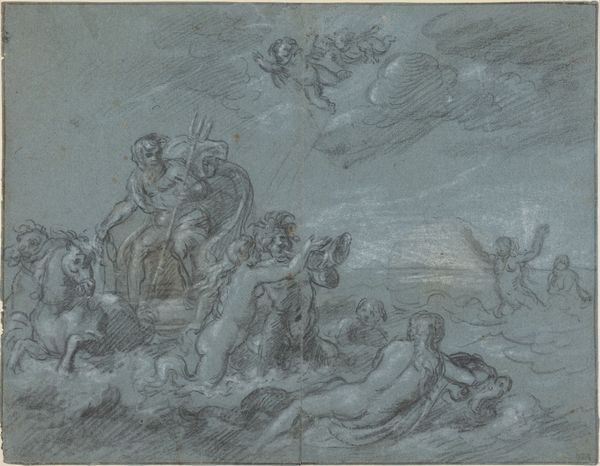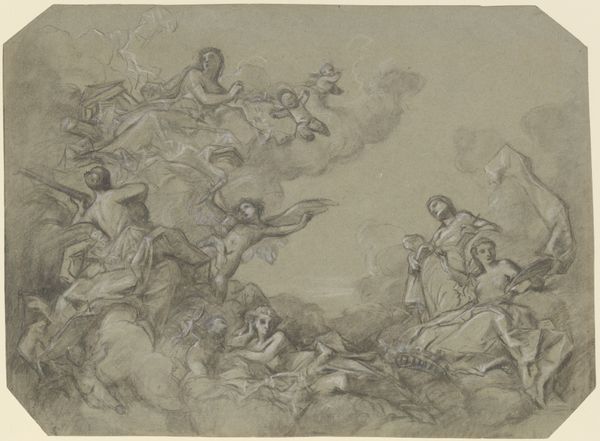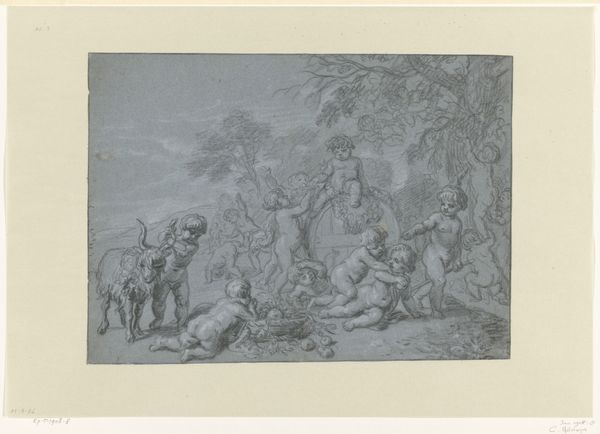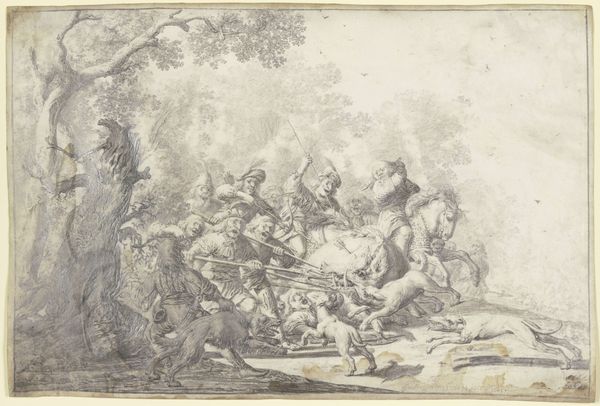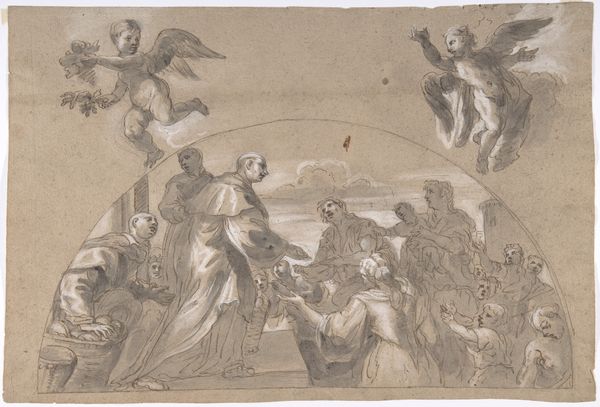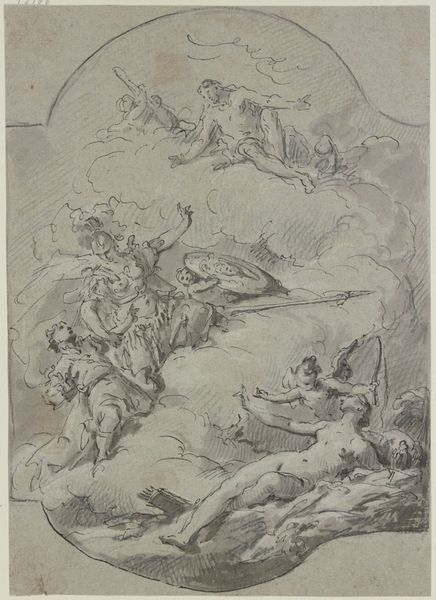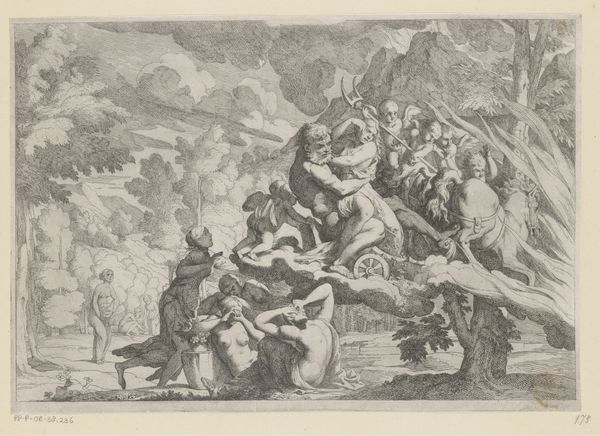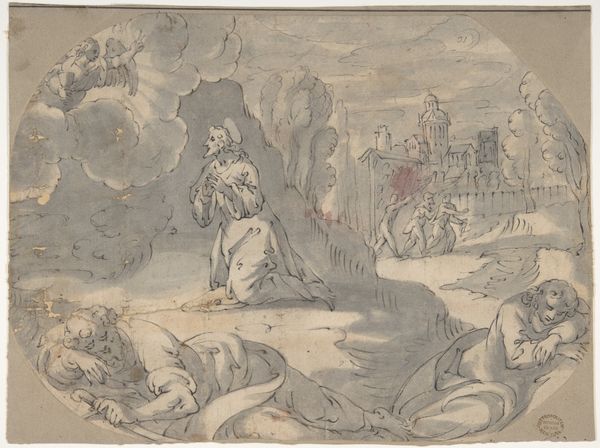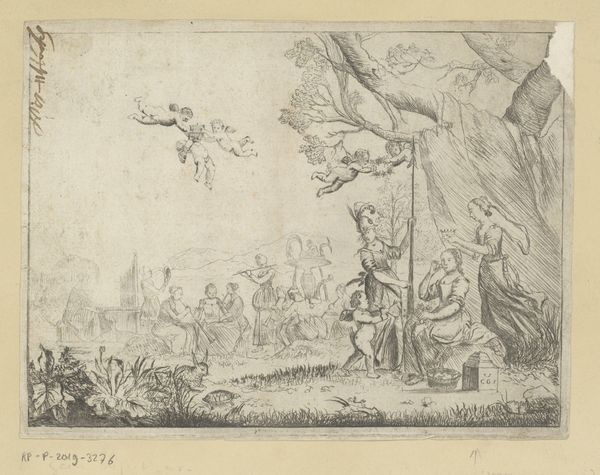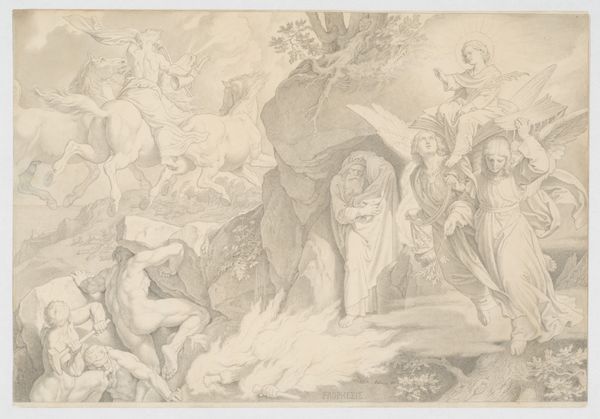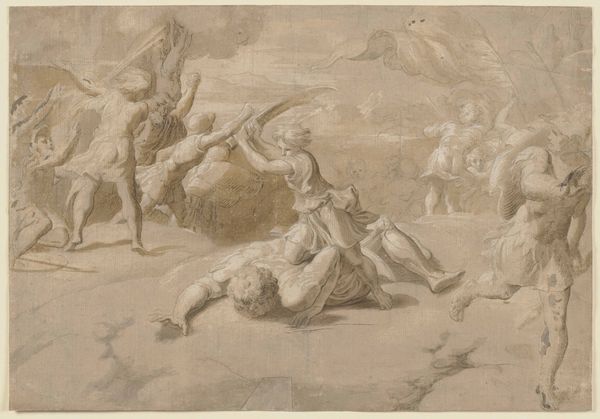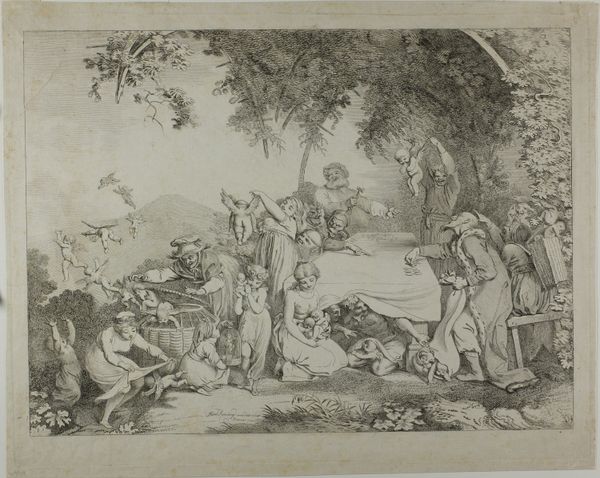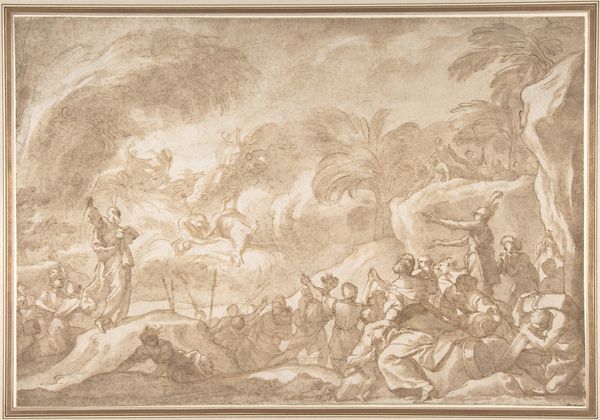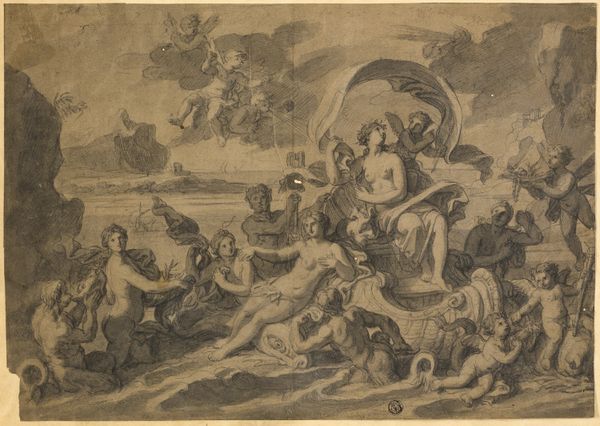
Ein mit einem Lorbeerkranz bekrönter Herrscher lässt vor der Statue des Amor Opfer darbringen
0:00
0:00
drawing, gouache, ink
#
drawing
#
allegory
#
gouache
#
figuration
#
ink
#
15_18th-century
#
history-painting
#
rococo
Copyright: Public Domain
Curator: Here we have a drawing by Jean Baptiste Marie Pierre, titled "Ein mit einem Lorbeerkranz bekrönter Herrscher lässt vor der Statue des Amor Opfer darbringen." It is crafted with ink, gouache, and drawing techniques from the 18th century. Editor: My god, that title is a mouthful. It feels... ethereal, like a faded memory trying to recall a grand, romantic scene. But everything is dissolving, smoky and ambiguous. Curator: Indeed. The composition exhibits a clear Rococo sensibility. Notice the emphasis on curvilinear forms, the light tonality, and the almost theatrical arrangement of figures across the picture plane. The thematic content also engages with allegory and historical painting. Editor: The cherubs floating above seem more mischievous than divine, right? Perched on clouds that look like spun sugar, they almost mock the serious ceremony unfolding below. Is this supposed to be celebratory or a bit cynical? Curator: I interpret it as an idealized representation of power, legitimized through classical allusion and the embrace of Amor. Consider the semiotic weight of the laurel wreath – a symbol of victory and authority. Note, also, the architecture anchoring the stage-like scene. Editor: But even the powerful, laurel-crowned dude is making offerings to a little love statue. How fragile and fleeting all of this pomp seems when placed next to, like, the basic human need to be loved and desired. The muted tones are appropriate; love changes, and empires crumble. Curator: From a purely formal perspective, the work functions as a study in light and shadow, leveraging the tonality of ink and gouache to suggest volume and spatial recession, while imbuing the overall scene with elegance. Editor: It’s funny, the older I get the more I realize everything comes down to love. And how insane people get pursuing it, clinging to it, demanding it! I suppose Pierre captured a very basic truth about the follies of the human heart. Curator: An insightful observation, offering an affective reading beyond the purely stylistic considerations. It reminds us of the importance of considering both form and content in art historical analysis.
Comments
No comments
Be the first to comment and join the conversation on the ultimate creative platform.
